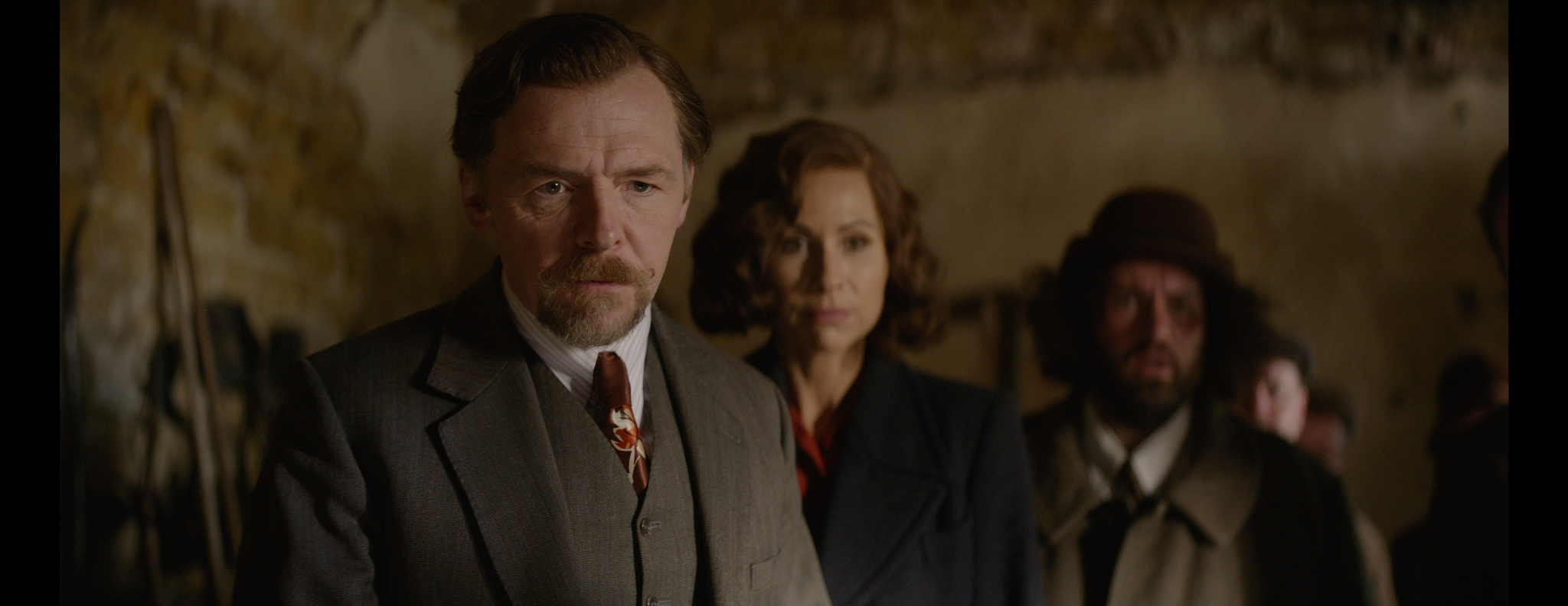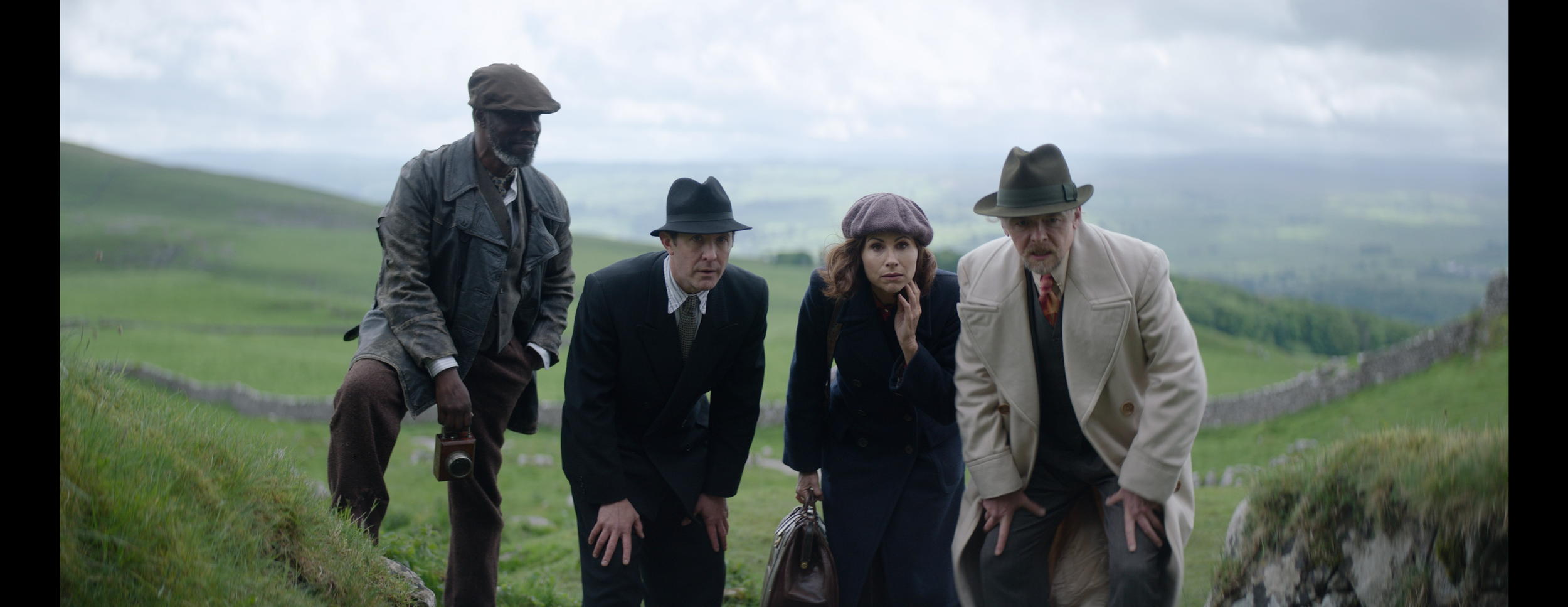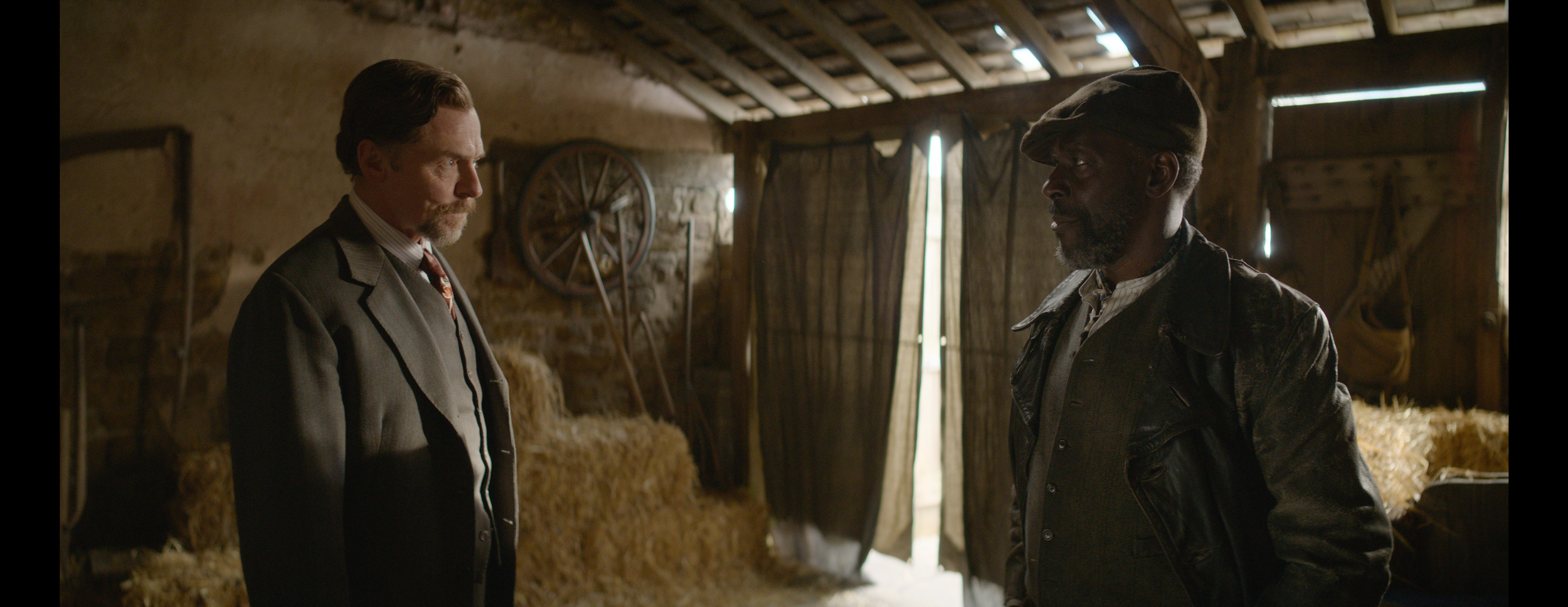Nandor Fodor and the Talking Mongoose: A Strange But Beautifully Made Film
Saban Films
When I received this film I thought it would be another of Simon Pegg’s brilliantly crafted comedies, but instead, I got a rather somber, low on laughs, but wondrously shot film that brought to mind a lot of the captivating films I saw growing up the 80’s and 90’s.
A Talking mongoose?
Nandor Fodor (Pegg) is a paranormal psychologist famous for solving strange occurrences all over the world. Set in 1935, Fodor struggles with heavy cynicism regarding anything he investigates and is set upon proving that these cases are false and all have logical, clearcut answers.
When he hears a letter, written from the renowned Dr. Harry Price (Christopher Lloyd), about folks living on the Isle of Man with an apparent talking “mongoose” called Gef (Neil Gaiman), pronounced “Jeff”, Fodor is intrigued.
He talks to Harry regarding the letter and Harry, having fully investigated the situation himself, convinces Fodor that it may very well be true, and wants him to see it for himself.
As an excessive cynic, Fodor accepts, thinking that he will have a quick, easily debunked case. What he finds challenges his supposedly failsafe ideologies, leaving him with the discomfort of having to accept the possibility that some things were never meant to be solved or controlled by humans.
The fun begins
Saban Films
When Fodor and his assistant Anne (Minnie Driver) arrive on the island, they meet the Irving’s, a family who seems to have the most knowledge and interaction with Gef. Mr. Irving (Tim Downie) is the peculiarly pleasant head of the family, who welcomes Fodor and Anne warmly to their home.
There they meet Margaret (Ruth Connell), his equally cheerful and hospitable wife; their daughter Voirrey (Jessica Balmer), a relatively quiet, self proclaimed ventriloquist and the plain-dealing farm’s caretaker, Errol (Gary Beadle).
Fodor and Anne are told that the family can “hear” Gef, in the walls mostly, and that he can respond to them when he is comfortable and in the mood to do so. They also have bits of Gef’s “fur” and other artifacts to “prove” he exists.
Anne becomes the first to hear Gef when she overhears Voirrey seemingly singing to herself. Though Voirrey claims to be able to throw her voice, it becomes clear to Anne that maybe Voirrey isn’t the ventriloquist that she and others claim she is, and that maybe, there actually might be some corporeal presence speaking from within the walls.
Saban Films
Fodor, on the other hand, dead set in his ways, consistently shrugs off anything the townsfolks and his host family say, in order to keep himself safe within the realm of his egocentric expertise and overall nihilistic views that something must be seen/proved in order to be real.
The hunt for Gef and all of the pleasurable absurdity begins as Fodor and Anne investigate all members of the family, and the townsfolk, to prove the existence of Gef, or write it off as yet another hoax that could possibly bring more fame to Fodor.
in all honesty…
Nandor Fodor and the Talking Mongoose is a creative, yet very slow moving and talkie piece. It would be a whimsical, easy going film to see if you want to chill out for a couple of hours on a humdrum Saturday.
Huge kudos to the uber talented cinematographer, Sara Deane, whose skillful eye created some absolutely spectacular pieces of moving art. The lighting, contrasts, colors and set up were the best part of this film.
The sets were dressed impeccably by set decorator Sue Parker, leaving us wanting more and more of their beauty, that at times, were created with highly professional, theater-esque flare. It is so rare to see this type of art in any films presently. Bravo!
Saban Films
Director/Writer Adam Sigal, who is known for his love of the films of the 80’s and 90’s, brilliantly creates a sumptuous feast for the eye that definitely left me with the feeling I got watching said films as a young person. It is so lovely to have a working filmmaker that loved the older style films as much as I did, and who is willing to breathe new life into the CGI filled hellhole that is mainstream Hollywood.
That said, where the film suffers, is in the writing department. The movement of the film is slow and the overabundance of talking made it difficult to enjoy. It was people telling long winded stories to bring us the pertinent information we needed.
Though Sigal does show us some visuals during the long story telling, it still didn’t do much for engagement. Though there were some humorous bits thrown in here and there, by mid-film, I simply wasn’t interested in hearing more talk.
Screenwriters are taught to stick with action for the most part, while large portions of dialogue are not encouraged. It is up to the writers to “show” us what we need to know, through creative sequences of action. This is an example of screenwriting craft and how it differs from other forms of written media such as novels.
I also was confused by the ending. It didn’t seem that Fodor had changed much due to his findings and experiences. As per any hero’s journey, it is preferential to see a character start with behavior flaws and then come out on the other side having beaten, healed or come to terms with their flaws.
Saban Films
There was a reckoning of sorts and a monologue on Fodor’s thoughts about belief, but it ended abruptly leaving me with a feeling that things had not been wrapped up carefully, or that Fodor himself hadn’t lost any of his toxic cynicism.
By far the best characters of the film were the secondary characters. I really enjoyed the Irving family, with their eccentric yet overall constructive outlook on life. The surrealism of their positivity added a refreshing, clear cut distinction between their feelings and beliefs, and Fodor’s annoying acrimony.
The best character by far, was Beadle’s Errol. I loved his rational demeanor concerning the situation at hand and his blunt yet balancing affect dealing with Fodor. He was a much needed teacher figure to Fodor while having most of the best lines of comedy in the film.
What I got from the film is that there is a very fine line between science and faith. We see that struggle in real life every day. There are steadfast atheists and others who have surrendered themselves in the belief of a higher being. Wherever your place in that spectrum, an all or nothing approach to this is dangerous, because gods cannot be proven and science can’t explain the existence of god-like occurances.
It takes a balance of both faith and science to make sense of this life. What we must surrender to is that we, as humans, simply cannot know everything. We are much too mired in our three-dimensional societies and bodies to even comprehend the energies of the multiverse. Even after spiritual awakenings, our brains are limited to what we know and simply cannot comprehend the workings of the multiverse/God.
Saban Films
The bottom line is that no human knows the real truth and there isn’t one “correct” road to spiritual discovery and enlightenment. If someone’s beliefs aren’t hurting or infringing themselves on anyone, why can’t we just let it be? We can still believe in what resonates with us while being at peace about all that we don’t know and letting others have their own, diverse journeys.
If we are open enough, though, we just might actually learn something new, which can lead to endless, exciting opportunities for lifelong growth and positive change.





